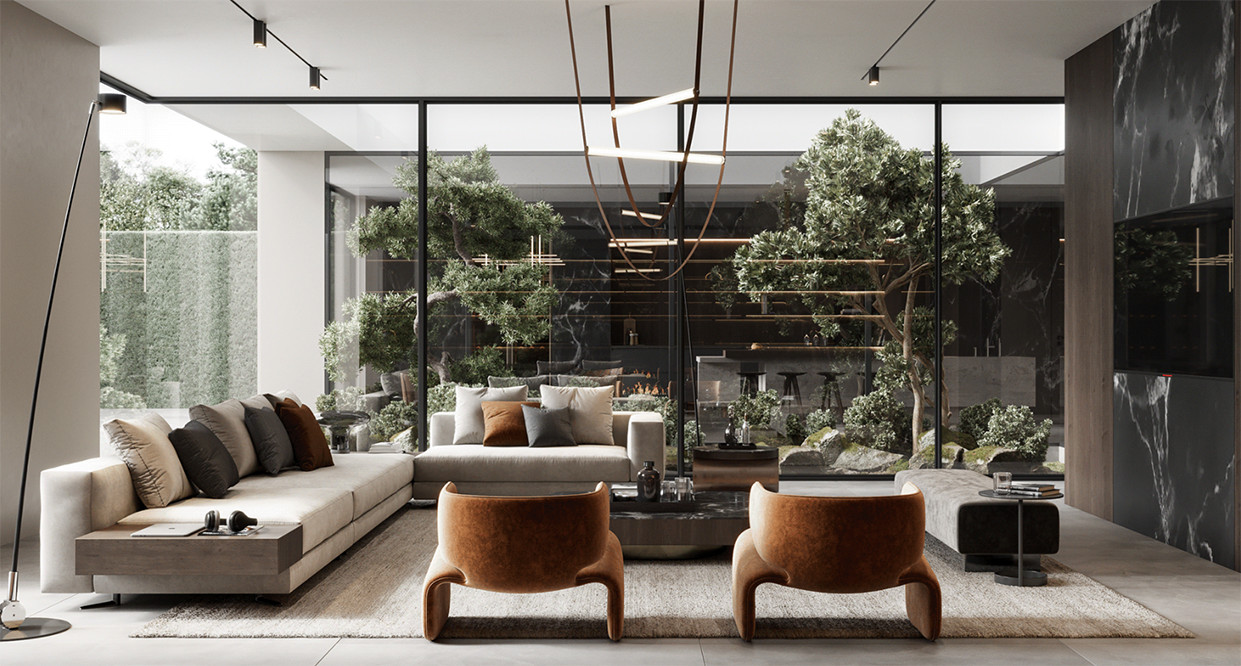

7 Elements of Great Interior Design
Interior design is more than just picking out paint swatches and curtain fabrics (although that is a fun!) and hoping for the best outcome. Professional interior designers have a strong understanding of how to create amazing and eye-catching spaces by using a foundation of design principles. These are the Seven Elements of Interior Design, and by understanding how they work, great interior design can happen.
So, what are these seven elements?
Space
This is the most important of the principles and is the foundation for all design ideas and concepts. That’s why it’s the first in our list.
From creating floor plans to choosing furniture, space will determine your entire design. The key is to strike a balance between negative and positive space. Positive space contains furniture and other objects. Negative space is empty. Combined, positive and negative space allows a room to breathe and rest easy on the eyes. Having a balance is ideal, however opting for more of one type of space can help to achieve different looks. For example, minimalist designs often use more negative space, while maximalist interiors incorporate much more positive space.
Light
The next element that should influence the design of a space is the amount of light in a space. Consider both natural and artificial light. Besides the function of lights, lighting plays a big role in setting the atmosphere of a space. Consider how you want each space to feel as well as what the space will actually be used for.
As an example, the lighting you design for a kitchen would be very different to that of a bedroom. The kitchen is a room that requires task lighting, so opting for spotlights or brighter overhead lighting would provide adequate light for cooking and food preparation, whereas a living room would instead likely have moodier lighting that uses warmer bulbs and lamps to set the correct ambiance. Dimmers are a great option to include and statement lighting is a great way to highlight a part of the room or add a dramatic flourish to a space.
Lines
Using lines to guide the eye around a room is another key home design principle that interior designers use in design direction. Lines can be horizontal, vertical or dynamic – and each lends itself well to certain interior design styles.
Horizontal lines are often used to create a sense of formality, stability and structure in a space. These lines are often created using strong lines through tables, chairs and flooring and can help make a space feel or appear larger and wider.
Vertical lines help draw the eye upwards, making a space taller. Anything from the doors and windows to wallpaper and panelling can help achieve this look.
Dynamic lines include curved, diagonal and zigzag lines that are eye-catching and breathe life into a space. Staircases can achieve this and are often enhanced with contrasting stair runners or banisters for added depth and to increase interest.
Texture
Texture is one of the home design principles that is often overlooked. Texture refers to the look and feel of an object. It can be used in several ways to achieve different looks. When you use two contrasting textures together, it adds weight, depth and interest to a space. Using both hard and soft textures will create a healthy balance.
Form
Form not only refers to the shape of a room, but also the objects within it. These can be geometric shapes with harsh and strong lines or natural, more organic forms.
Form is a functional element of design and is required for bringing together a cohesive design. Placing objects around a focal point in a space is a clever way to highlight a statement feature such as a fireplace or bay window. When used correctly in a design, the use of form is a technique of telling the story within a space.
Color
Color is one of the most obvious home design principles, and probably the first one you thought of at the start of this article. With that being said, color has more of an impact than you might think. Color psychology plays a huge role in elevating a space and how we feel when we’re using that space.
For example, red is a color that can energize, excite, and evoke feelings of passion. However, too much red can also cause feelings of anger and unease. It’s necessary to balance bolder colors such as red with more neutral colours throughout a space.
Another important interior design rule to remember is that using darker colors can make a room feel smaller, and lighter colors make a space feel larger..
Pattern
The use of patterns is the final home design principle to consider in your design. Patterns work together with colors and shapes to add interest, or tie in various areas of the room together.
For use of patterns, look to painting techniques, wallpapers, curtains and fabric upholstery. Consider the space you’re working with to determine where to use patterns as well as how much patterns should be used.





